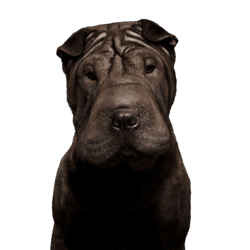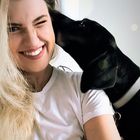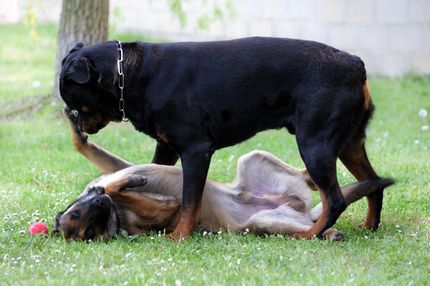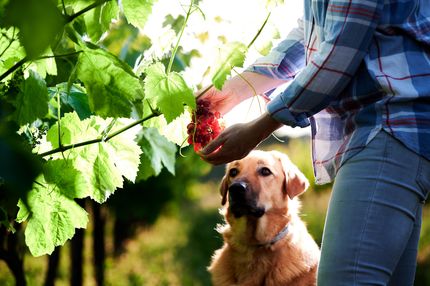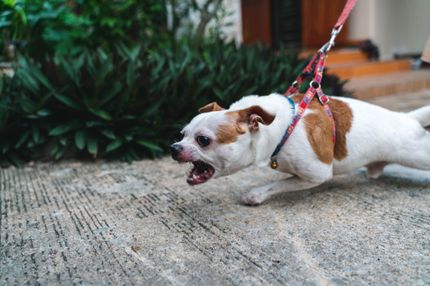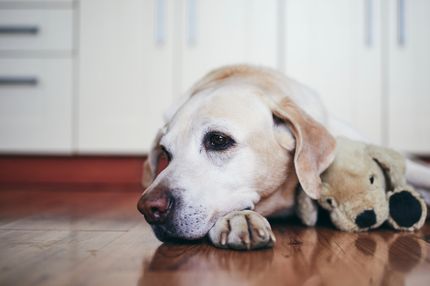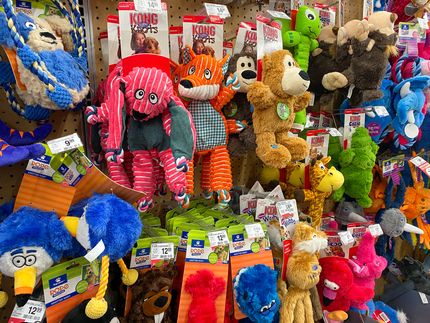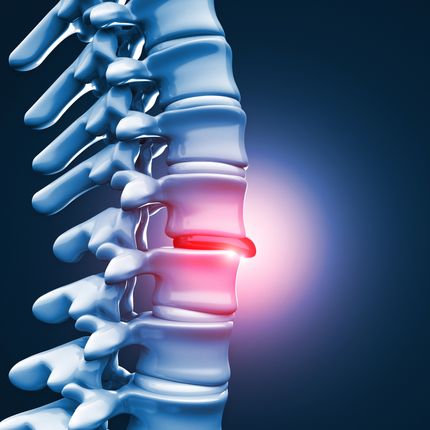Facts & Origin
Origin of the Ori Pei
The Ori Pei is a deliberately bred hybrid breed resulting from the crossing of a Shar-Pei with a Pug. The aim of this breeding was to create a compact family dog with the typical appearance of the Shar-Pei, but with the happier nature and more robust constitution of the Pug. The origins of this cross lie in the USA in the 1970s, when breeders tried to make the Shar-Pei, which often had health problems, more resistant by crossing it with a more stable gene pool (in this case the Pug).
By combining two Asian breeds - both with a long history - the Ori Pei combines both the exotic, striking appearance of the Shar-Pei and the charming, people-oriented character of the Pug. The breed is still not officially recognized today, but is enjoying growing popularity as a companion dog with character and charm.
Name synonyms
As the Ori Pei is not an officially recognized breed, there are several names in circulation - often depending on the country or breeder. The most commonly used are
Ori Pei
Pugpei (play on words from Pug = Pug + Pei = Shar-Pei)
Shar-Pug (especially in German-speaking countries)
Shar-Pei Pug Mix
All these terms refer to the same type of dog: Shar-Pei × Pug. As there is no official breed standard, both spelling and external appearance are not uniformly regulated - a circumstance that can lead to confusion in description and placement.
Criticism of the breed
Like many designer dogs, the Ori Pei is also subject to critical observation, particularly with regard to breeding motives and health aspects. Both parent breeds have typical breed problems: The Pug often suffers from brachycephaly (short-headedness), breathing problems and obesity, while the Shar-Pei is known for skin problems, entropion (inward rolling eyelids) and genetic predispositions such as Shar-Pei fever. Much depends on the selection of parents, breeding ethics and medical care.
Commercial marketing is also viewed critically - Ori Peis are sometimes sold at high prices, even though they are formally mixed breeds and are not monitored by breeding associations.
Reputable breeders attach importance to health checks, education and responsibility. Anyone looking to purchase an Ori Pei should be aware that it can be a visually special but high-maintenance breed - with the potential for health challenges.
| Alternate Name | Pugpei, Shar-Pug, Shar-Pei Pug mix |
| Origin | China |
| Life expectancy | 9 - 15 years |
| Care requirements | low-maintenance |
| Activity level | low - average |
| FCI group | not recognised |
| AKC group | not recognised |
| KC group | not recognised |
More Pug mixes
More Shar Pei mixes
Attitude, character and temperament of the breed
Possible character traits
The character of the Ori Pei is often a fascinating mixture of alertness and playfulness, characterized by the different temperaments of its parents. The Ori Pei often inherits a friendly, lively and people-oriented nature from the Pug, while the Shar-Pei has a rather calm, watchful and sometimes reserved character.
In many cases, the Ori Pei is affectionate, intelligent and adaptable. It is ideal as a family dog, loves company and needs a close bond with its caregiver(s). At the same time, he can also show a certain stubbornness or independence, depending on his Shar-Pei temperament. This mixture makes him an interesting, sometimes challenging, but extremely loyal companion.
With the right training, lots of positive reinforcement and clear rules, the Ori Pei usually develops into a friendly, calm everyday companion who gets on well with children and can cope with both city life and the countryside - as long as he is part of his pack.
Character
Usage
Care and health
The Ori Pei can present various health challenges, depending on whether it is more like a Shar-Pei or a Pug. Common issues are:
Skin folds & inflammation: More pronounced Shar-Pei wrinkles need to be cleaned and checked regularly to prevent infection.
Eye problems: Entropion can also occur in the Ori Pei and may need to be treated surgically.
Breathing problems: If the Pug is predominant, breathing problems can occur due to short stature - especially in hot weather.
Allergies & sensitive skin: Both breeds are prone to skin irritations.
Overweight: Ori Peis often have a good appetite - regular exercise and controlled feeding are important.
Grooming is generally easy, as the short, smooth coat sheds very little. However, dogs with a more wrinkled coat require intensive skin care, including occasional bathing with mild shampoos and regular checks.
Health care also includes: vaccinations, worming, dental care, claw care and weight control. Good breeders make sure that only parent animals with resilient health values are used for breeding - especially when it comes to the respiratory tract, eyes and skin.
Possible appearance
The appearance of the Ori Pei varies from litter to litter - some dogs look more like the Shar-Pei with pronounced wrinkles and almond-shaped eyes, others show more of the round, open face of the Pug. Typical, however, is a compact, strong build with a distinctive, often wrinkled head, medium muzzle length and a short, slightly upturned tail.
The size is usually between 38 and 50 cm shoulder height, the weight ranges between 12 and 20 kilograms. The ears are often triangular and slightly folded, the eyes are expressive and often dark in color.
There are many color variations:
Beige, cream, black, gray, brown, sometimes with a dark mask
The coat is short, dense and smooth - ideal for easy grooming, but sensitive to extreme cold or heat
Overall, the Ori Pei looks like a mini Shar-Pei with a pug touch: robust, charming, unmistakable - with a face that shows character and attracts attention.
Known Diseases
Hip dysplasia (HD)
Hip dysplasia (HD) is a genetic condition in dogs where the hip joint is not shaped properly. This leads to pain, stiffness and restricted movement.
Denture malocclusions
Malocclusions of the dentition often occur in dogs with short muzzles.
Shortness of breath
Difficult breathing can be recognized by the dog's rattling and sometimes accelerated breathing rate.
Overweight
Often, unfortunately, the dogs very much under excess weight. But the dogs themselves are never to blame!
Heart disease
Can occur frequently in dogs and can sometimes be treated with medication.
Breathing problems
Dogs with shortened muzzles can often experience respiratory problems.
Skin inflammations
Can be hereditary in certain breeds.
Amyloidosis
Amyloidosis refers to a group of diseases that share a common feature: the pathological abnormal deposition of a fibrous protein called amyloid in various tissues of the body. Several organs are often involved.
FAQ
-
An Ori Pei is a cross between a Shar-Pei and a Pug. This mix can inherit the wrinkled skin and short muzzle of the Shar-Pei, but typically has the small, compact build of the Pug.
-
An Ori Pei usually weighs between 9-18 kg. They are usually 40-50 cm high.
-
Ori Peis need daily exercise and care that includes regular brushing and cleaning of their wrinkles.
-
Ori Pei are prone to health problems such as hip dysplasia, patellar luxation and eye diseases such as entropion and distichiasis.
-
Ori Peis are good with children if they grow up with them from an early age.

